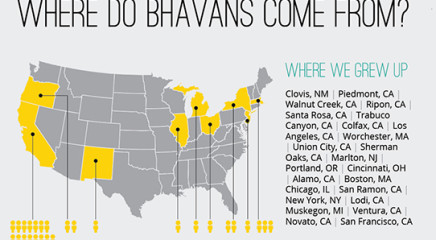How to Choose Between Blog Posts and Contributed Articles

Today’s technology market – with more than 32,000 startups competing for mindshare in Silicon Valley alone – guarantees that virtually every company creates and publishes a variety of written material, promoting everything from its CEO, brand, industry position, or a current or future product. That’s a lot of content.
Ideally, this content is part of an integrated marketing and communications strategy that includes everything from company-specific press releases and white papers to blog posts and contributed articles. The former two are often straightforward. The latter (blog posts and contributed articles) require a more engaging, educational, editorialized – and sometimes even entertaining – approach. Their objective is to position the company or an executive as a compelling source of information and create what most PR firms and communications departments consider the holy grail of content creation – “thought leadership” – for the author.
Although thought leadership is a popular goal, it’s surprising how frequently many communications pros misunderstand the difference between blog posts and contributed articles. Knowing the nuances of the two formats is key in making the right call when deciding where to publish a piece of content.
What’s a blog for?
Corporate blogging has been around for nearly as long as WordPress.com, yet many companies are still unsure how best to use blogs and often ignore them altogether. A well-composed blog should function as an extension of an organization’s external communications program and serve as a window into the company and its secret sauce. It can also be an opportunity to showcase employees’ expertise and insights.
In the B2B technology domain, successful corporate blogs generally come in two varieties: 1) an engineering blog, which showcases the details of new product features and technologies and gives technical buyers, customers and community members utilization and troubleshooting tips; or 2) a thought leadership blog, which provides executive buyers, customers, industry influencers, potential hires and existing employees a flavor for the corporate brand and industry perspective. Thought leadership blogs usually have some or all of the following features:
• Product announcements and other company news: Blog posts are effective extensions of company press releases and new product announcements. These offer additional viewpoints and executive opinions about news announcements and may provide insights and opinions to supplement news releases or company studies.
• Select internal communications updates: A text-based parallel to a company Instagram, these posts might offer a humanizing look inside the business and showcase such things as employee achievements, company outings or industry awards. These posts may also showcase a company’s values and work culture for existing and potential new hires.
• Industry commentary: This type of blog post discusses larger industry issues and ideas that affect the company, its customers and partners – such as automation in the IT market, major security regulations or the growth of DevOps. The goal of these posts is to position the company as a resource to anyone working in the same field and offer resources to those wanting to learn more about an issue that is relevant to the company.
When is a contributed article the right choice?
The biggest difference between blog posts and contributed articles is that the latter cannot be self-promotional. An article mentioning the company that the bylined author works for (outside of their personal biography that accompanies the article) is generally forwarded to a media outlet’s advertising department for consideration as a paid sponsored post. In fact, editors recoil from the perception of acting as promotional mouthpieces for vendors and will typically reject content that blatantly employs a heavy dose of the same buzzwords or themes as the vendor’s website. Some outlets even take this a step further and prohibit any article that overtly relates to the company’s market focus.
Instead, contributed articles are expected to offer unique, timely and occasionally controversial insights about the company’s specific technology market, its customers’ business pain points or forward-looking predictions about the industry in which the author works (just to name a few topics). These articles most often must abide by additional editorial rules as well, such as word count, grammar and a clear narrative. They must also answer some basic, but critical questions like “why is this topic important?” and “why now?”
C-level or senior staff often get preferential treatment in the byline. However, many outlets also do want to hear from industry subject matter experts on the front lines of innovation or those who use certain products every day and have tips, tricks and insights useful to the publication’s audience.
Sometimes there’s no place like home – for your content
When it comes to content that can be described as “thought leadership,” it’s important to craft a viewpoint that is original, contrarian or just plain valuable for readers. At the same time, also remember that the best outlet for an opinion is not always a contributed article in a popular technology publication. Thought leadership pieces that are particularly self-promotional, or that hinge on your company’s success, will often find a more welcoming home in a company blog or even self-blogging platforms like Medium. They can then pair well with a robust social media program that promotes and creates awareness for both the company and the author, maximizing exposure and ensuring that the right audience sees the right type of content.




















































